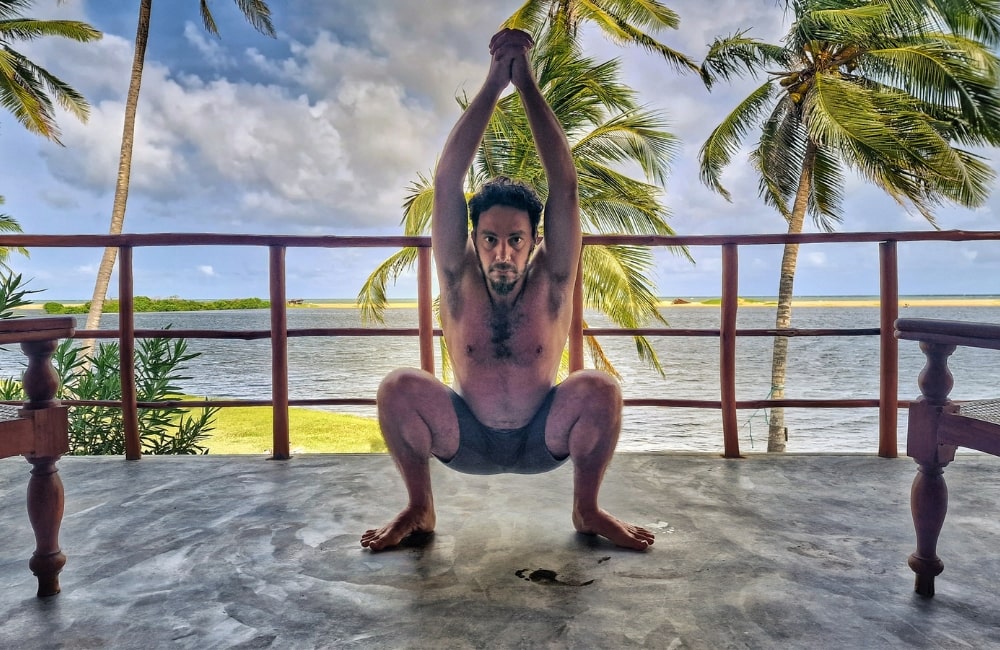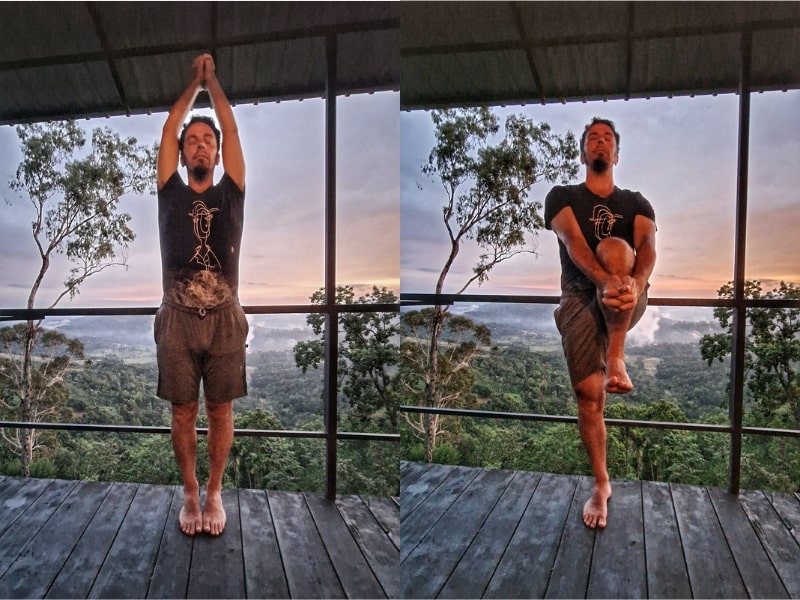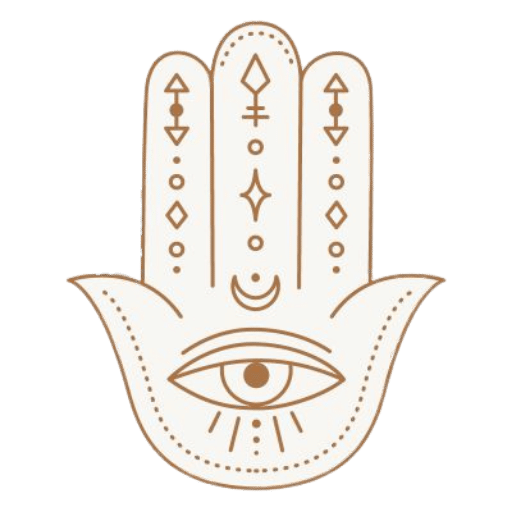
Kashtha Takshanasana (wood chopping exercise/posture, sometimes spelled Kashta Takshanasana)
Benefits, contraindications, instructions. A Yoga Asana from Pawanmuktasana Serie III
Kashtha Takshanasana (wood chopping exercise/posture), sometimes called Khastikasana, is one of the Shakti Bandha Asana, the energy block postures composing the Pawanmuktasana Series III as illustrated by Swami Satyananda Saraswati in the Bihar Society book “Asana, Pranayama, Mudra, Bandha”.
As with all the asana in this group, this exercise is aimed at improving the energy flow within the body and breaking down neuro-muscular knots. Kashtha Takshanasana is especially good to give the practitioner a quick and sudden boost in energy and vitality.
Wood chopping is an archetypical form of exercise and it’s commonly practiced in many disciplines, primarily those that require physical strength, conditioning, and coordination. A few examples:
- Lumberjack Sports: of course, woodchopping exercises are a significant component of lumberjack sports, also known as timber sports or woodsmen competitions. These events showcase traditional forestry skills where competitors use axes to chop through logs or blocks of wood.
- CrossFit: Woodchopping exercises are sometimes incorporated into CrossFit workouts to develop functional strength and cardiovascular endurance. These exercises typically involve using a weighted implement such as a sledgehammer or mallet to strike a tire or a designated target repeatedly. The motion replicates the action of chopping wood and engages the core, upper body, and lower body muscles.
- Martial Arts: Some martial arts styles incorporate woodchopping exercises as a means to develop power, focus, and technique.
In this article, we are going to describe the traditional form of the woodchopping exercise in yoga asana, and a few of its variations used in Kundalini and Kriya Yoga. You’ll also find a video of a kriya from the Himalayan yoga tradition that uses this pose as it’s main action.
We are also going to describe contraindications and benefits of Kashtha Takshanasana, the wood-chopping pose.
Check also
> Ajna Chakra Yoga Practice: A Kundalini Kriya For The 3rd Eye
> Nadi Shuddhi Kriya – A Kundalini Pranayama Practice

How to practice Kashtha Takshanasana (wood chopping exercise)
- Squat with the feet on the floor about hip-width apart or slightly more if needed. The knees should be fully bent and separated from each other.
- With arms extended and elbows straight, interlace the fingers of both hands and place them between the legs just above the floor.
- The elbows remain straight throughout the practice, and eyes shall stay open.
- Imagine the action of chopping wood, raising the arms above and behind the head while stretching the spine upwards. Look up towards the hands.
- Bring down your arms in an energetic downward stroke, as if chopping wood – forcefully exhale from your mouth with a “ha” sound.
- Inhale forcefully from your nose while bringing the hands back up behind your head.

Kashtha Takshanasana Kundalini Variations
In some traditional kundalini yoga kriyas, variations of the wood-chopping exercises are used. Here are the most common.
Variation 1: Standing wood chopping with knee raises
- Stand straight with feet hip distance apart, interlace your hands and bring them above and behind your head with your elbows straight.
- Bring down your arms in an energetic downward stroke, as if chopping wood, while raising your right knee as high as you can towards the chest – forcefully exhale from your mouth with a “ha” sound. Bring the arms back up and repeat with the left knee.
This is counted as one round.
Variation 1.2: Kashtha Takshanasana preparation
Although this is not really a variation of this asana, we’ll mention it here as it’s included in the kriya presented at the end of this article.
- Stand straight with feet hip distance apart, raise your hands above your head, palms facing forward and elbows straight.
- Raise your right knee as high as you can towards the chest, keep the hands above your head as they are – forcefully exhale from your mouth with a “ha” sound. Bring the arms back up and repeat with the left knee.
This is counted as one round.
Variation 2: Stand to squat Kashta Takshanasana
- Stand straight with feet slightly wider than hip distance apart, interlace your hands and bring them above and behind your head with your elbows straight.
- Bring down your arms in an energetic downward stroke, as if chopping wood, while squatting as low as you can, feet planted on the floor – forcefully exhale from your mouth with a “ha” sound. Bring yourself and your arms back up.
This is a very intense variation, so go slowly and listen to your body.
Wood-Chopping Exercise, Benefits of Kashtha Takshanasana
This exercise helps loosen the pelvic girdle and strengthen the pelvic muscles. According to Swami Satyananda, while also working on the more superficial upper back muscles (trapezius), this asana also has a special effect on the muscles of the back between the shoulder blades (rhomboid minor and major, levator scapulae), which are normally quite difficult to access. It also releases stiffness in the shoulder joints by increasing the synovial fluid.
On a psychological level, Kashta Takshanasana helps to release frustration and lightens up the mood.
Contraindications of Kashtha Takshanasana
Avoid if you have knee problems, sciatica, slipped discs or other serious spinal problems. Those suffering from unmedicated high blood pressure should never perform this exercise or anything similar.
Pregnant women and women suffering from period pain can practice Kashta Takshanasana but with a slower rhythm and less repetitions.
If dizziness arises at any time, stop the practice and bring the breath to normal.
Beginners or disability variations of the wood-chopping yoga pose
Those with knee or back problems, or any individual who has difficulty in keeping a squatting position can practice version 2 above.
If that’s also too intense for the practitioner, practicing without any leg movement is also an option, although of course less effective.
Kashtha Takshanasana Kriya
Kundalini Wood Chopping Practice
How to practice the Kashtha Takshanasana Kriya
- Step 1: Kashtha Takshanasana Variation 1.2 – [duration: 2 minutes or 50 repetitions]
- Step 2: Rest in standing savasana or anatomical position (see picture below) – [duration: 2 minutes]
- Step 3: Kashtha Takshanasana Variation 1 – [duration 2 minutes or 50 repetitions]
- Step 4: Rest in standing savasana or anatomical position (go inwards and feel the effects of the practice) – [duration: 2 minutes]
- Step 5: Traditional Kashtha Takshanasana – [duration 2 minutes or 50 repetitions]
- Step 6: Rest in standing savasana or anatomical position (observe your thoughts and sensations) – [duration: 2 minutes]
- Step 7: Kashtha Takshanasana Variation 2 – [duration 2 minutes or 30 repetitions]
- Step 8: Savasana – [duration 5 to 10 minutes]
Steps 6 and 7 may be omitted for those practicing this kriya for the first time, or for people who find variation 2 too hard to perform.
Steps 1 to 7 (or 1 to 5 if the above is considered) constitute one round, a full practice of this kriya is composed of 3/4 rounds, start with one anyway to get a hang of how this kriya affects you.
The more rounds you perform, the longer the savasana should be. After this practice, it’s ideal to sit in meditation for 10 to 20 minutes.

Wrap Up: Kashtha Takshanasana, an asana or a pranayama
Like some other similar flow asana, Kashta Takshanasana is to be performed with a particular breath, similar in nature to bhastrika pranayama. This makes the wood-chopping asana practice both a physical and a breathing exercise – but not all breathing exercises are pranayama.
For a breathing exercise to become pranayama there must be kumbakha (breath retention) which is not present in the traditional way of performing kastha takshanasana.


